Do Not Visit Zion in Winter Until You Know This
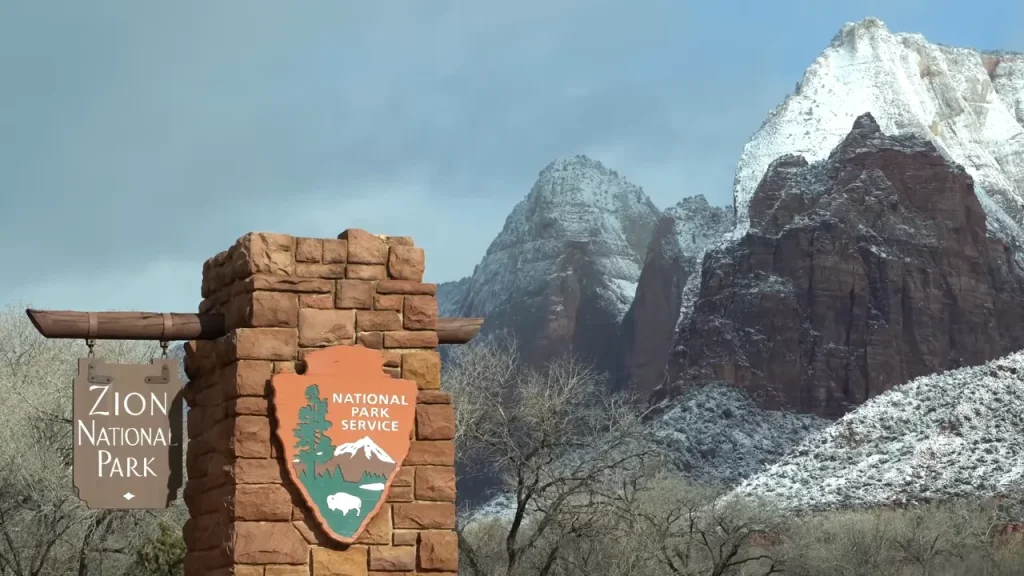
Winter is a magical time to visit Zion National Park. The towering red cliffs sprinkled with snow, the quiet serenity of uncrowded trails, and the crisp winter air create an unforgettable experience. However, winter in Zion comes with unique challenges that can affect your trip. If you’re considering a winter adventure, make sure you’re prepared for the season’s surprises. Here’s what you need to know before you go.
Table of Contents
1. Winter Weather in Zion: What to Expect

Zion’s winters are mild compared to many national parks, but they still require preparation.
- Temperature Range: Daytime temperatures usually range from 40 to 60°F, while nights can dip below freezing.
- Snowfall: Zion typically sees 2-3 snowfalls per year. Snow melts quickly at lower elevations but can linger in higher, shaded areas.
- Storms: Though rare, winter storms can impact trails and roads. Monitor the weather a week before your trip for potential disruptions.
Pro Tip:
When the sun is out, the daytime temperatures can feel quite comfortable. Pack layers so you can adjust to fluctuating conditions.
2. Winter Trail Conditions and Hiking Safety
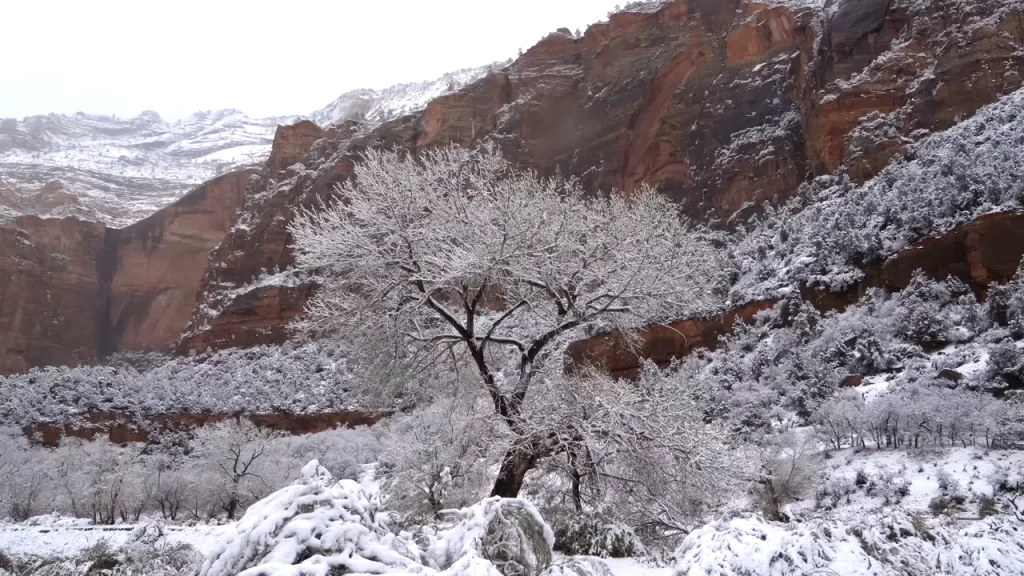
Not all trails are safe to hike in winter, and conditions can vary greatly depending on snow, ice, and elevation.
Trails to Avoid
- Icy Trails: Avoid Emerald Pools and Weeping Rock during icy conditions. Water on these trails freezes, creating slippery and dangerous paths.
- Steep Trails: Trails like Angels Landing may be hazardous without proper equipment.
Safer Trail Options
- Pa’rus Trail: This flat, easy trail offers breathtaking views without the risks of ice or steep climbs.
- Riverside Walk: A scenic, accessible trail suitable for all ages and weather conditions.
Safety Tips
- Use traction devices like Yaktrax for icy patches.
- Wear sturdy, waterproof hiking boots with good grip.
- Bring trekking poles to help with balance on slippery terrain.
- Pack extra warm layers and gloves in case conditions worsen.
3. Driving Through Zion in Winter
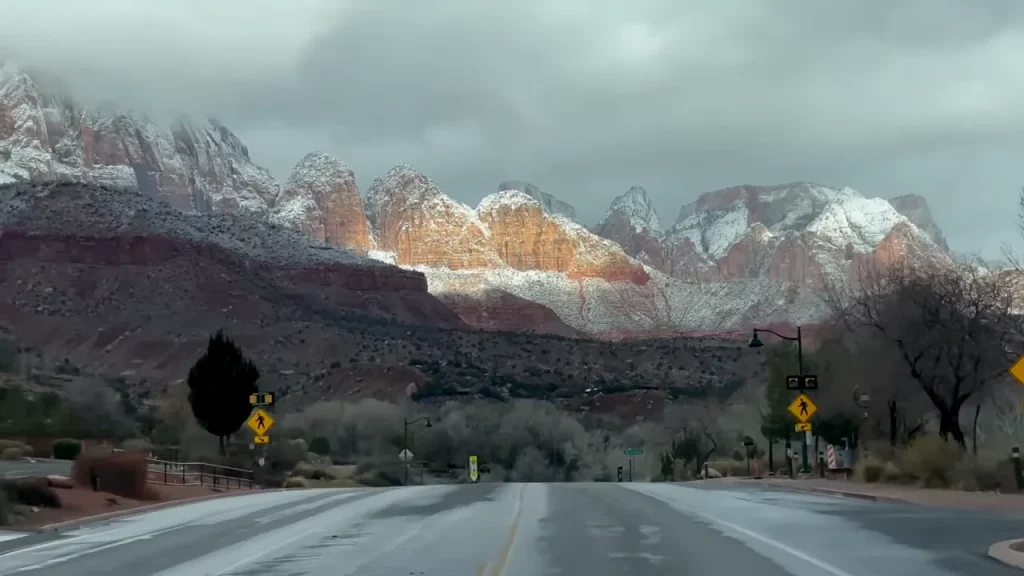
Winter visitors enjoy a significant advantage: the ability to drive through Zion Canyon.
- Shuttle-Free Access: From March to November, visitors must use the park’s shuttle system. In winter, you can explore the park in your own vehicle, giving you greater flexibility.
- Road Conditions: Park roads are usually well-maintained, but storms can cause temporary closures, especially in areas like Kolob Canyon. Drive cautiously during or after snowfalls.
4. Crowds and Holidays: Timing Your Visit
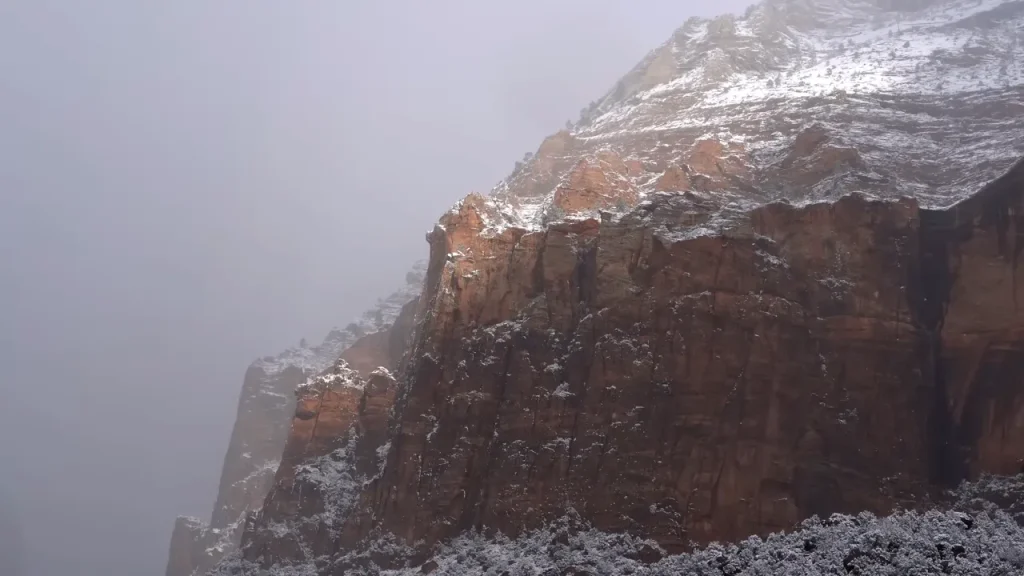
Winter is the least crowded time of year in Zion, but holidays like Thanksgiving, Christmas, and New Year’s attract more visitors.
Best Times to Visit
- Midweek in January or February: These are the quietest times in the park, offering a peaceful experience.
- Avoid Holiday Weekends: If visiting during holidays, add an extra day to your itinerary to enjoy the park after the crowds leave.
Pro Tip:
For solitude, explore lesser-known trails like Sand Bench Loop or Kolob Canyons.
5. Wildlife in Winter
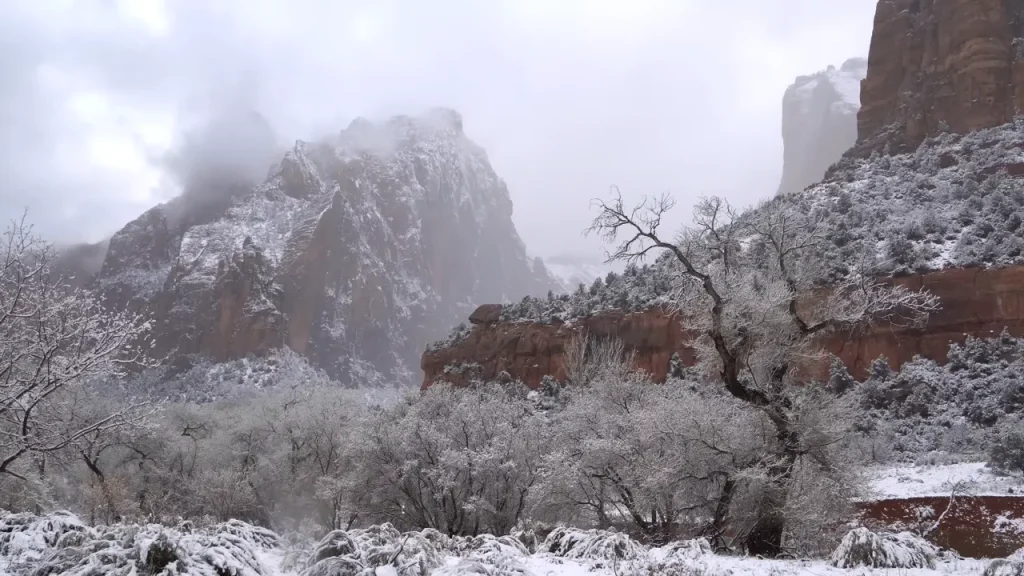
Winter is a prime time for spotting wildlife in Zion.
- Common Sightings: Mule deer, foxes, and coyotes are often visible, especially in quieter areas.
- Safety Reminder: Maintain a safe distance and never feed wildlife.
6. Limited Services in Winter
The nearby town of Springdale slows down in winter due to fewer visitors.
- Dining and Shopping: Many restaurants and shops close for the season, but enough remain open to meet basic needs.
- Lodging: Hotels and vacation rentals are more affordable, making it easier to plan a budget-friendly trip.
7. Packing Essentials for a Winter Visit
Proper packing can make or break your Zion winter adventure.
Clothing
- Base Layers: Thermal shirts and leggings for warmth.
- Outerwear: Waterproof jackets, insulated pants, gloves, and beanies.
- Footwear: Durable, waterproof boots with good traction.
Gear
- Traction Devices: For navigating icy trails.
- Thermos: Keep hot drinks like tea or cocoa for post-hike warmth.
- Extra Layers: Pack backup clothing in case of unexpected weather changes.
8. Winter Photography Opportunities

Zion’s snowy landscapes create incredible photo opportunities.
- Golden Hours: Sunrise and sunset offer soft lighting that enhances the contrast between red rock and white snow.
- Unique Shots: Look for reflections in frozen streams or snow-covered cliffs.
- Wildlife: Use a zoom lens for candid shots of animals like deer or foxes.
9. Be Flexible with Your Plans
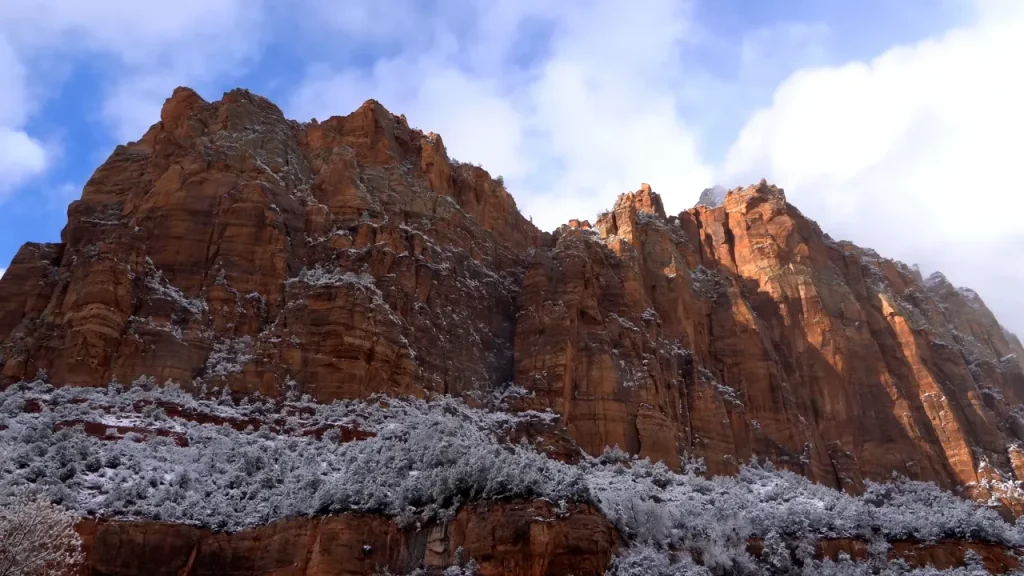
Winter weather can be unpredictable, so flexibility is key.
- Snowy Trails: If trails are snowed in or icy, opt for safer hikes or explore nearby areas like Snow Canyon State Park.
- Trail Closures: Check with the Zion Visitor Center for real-time updates on trail conditions and accessibility.
Conclusion
Winter in Zion National Park offers a unique and peaceful experience, but preparation is essential. From understanding the weather to choosing the right trails, knowing these tips will help you plan a safe and memorable visit. Pack wisely, monitor conditions, and embrace the beauty of Zion during this serene season.
With fewer crowds, open roads, and stunning snow-dusted scenery, Zion in winter can be an unforgettable adventure—if you’re ready for the challenges it brings.